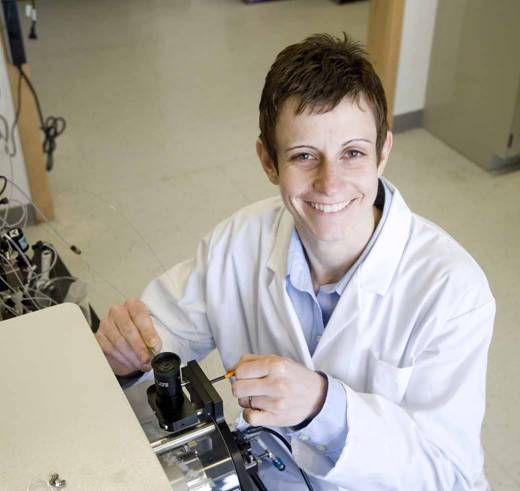PLoS ONE Publishes 10,000th Manuscript!
PLoS ONE is pleased to announce the publication of our 10,000th article! Since its inception in December 2006, PLoS ONE has proven to be a great success, and this milestone shows that daily open-access publication is a viable model which enjoys wide support within the academic community. Thank you to our authors, community, and colleagues for helping us to reach this exciting goal.
I work in the production group at PLoS ONE, and as this milestone represents the output of our group, we thought it would be appropriate for me to interview the authors of the 10,000th article, “Immunoproteomics Analysis of the Murine Antibody Response to Vaccination with an Improved Francisella tularensis Live Vaccine Strain (LVS)”, by Twine et. al.
This is an article which focuses on the pathogen tularemia and the possible development of a human vaccine, and so we asked Dr. Sue Twine of the National Research Council Canada to share her expertise, and experiences with PLoS, in order to help us celebrate. When asked how she felt about being published as our 10,000th article, Dr. Twine responded, “I’m honoured – congratulations PLoS ONE!”
AvG: Please tell us a bit about your scientific background – have you always tested vaccines and/or studied the tularemia disease?
ST: My interest in tularemia developed through a somewhat convoluted path. I’ve always been fascinated by proteins, so I spent my PhD studying protein-ligand interactions. I then moved from the UK to Canada to pursue postdoctoral studies, using biophysical approaches to study protein-protein interactions. I joined the National Research Council Canada in 2002 as part of the proteomics group – I wanted to study proteins on a much larger scale. It was through one of my mentors here, Dr Wayne Conlan, that I developed an interest in tularemia and vaccine development. His enthusiasm for this little known organism is infectious, and I quickly became fascinated by how little was known about the pathogen.
AvG: Why do you think it is important to develop a tularemia vaccine?
ST: Bioterrorism is perceived to be a realistic threat with the potential to cause mass casualty events. Because of its extreme virulence, ease of aerosol dissemination, and capacity to cause severe disease in humans, F. tularensis is considered a potential biological weapon and is classified as a Category A select agent by the CDC. Among the bacterial diseases, anthrax, plague, and tularemia are considered the most serious biothreats. Anthrax vaccines already exist and are being stockpiled, and a new plague vaccine will soon go into production. LVS could serve as a stockpile vaccine for tularemia if it can meet the necessary regulatory requirements.
AvG: What do you find most exciting about your findings?
ST: A major factor impeding the licensing of a tularemia vaccine is the absence of a well defined immune correlate of protection that can be used to predict whether or not a vaccine recipient has elicited a protective immune response. From a clinical perspective, an antibody response that correlates with protection is ideal for this purpose since blood samples are easy to obtain and analyze. In human experiments conducted by the US Army in the 1960s, everyone given LVS generated an antibody response against whole bacteria, but all were not protected from exposure to virulent Francisella tularensis. Thus, mere seroconversion cannot serve as a correlate of protection for this vaccine. BALB/c mice are protected by vaccination with LVS, whereas C57BL/6 mice are not. Comparing the antibody repertoires generated in each mouse strain revealed several differences. Thus, our work indicates that examining the pattern of antibody responses to a diversity of Francisella antigens can reveal a correlate of protection that is not obvious by using reactivity to crude bulk antigen.
AvG: What do you see as a next step with your results?
ST: The next step is to apply the immunoproteomics approach to sera from humans vaccinated with LVS, to determine whether a similar repertoire of antibodies are generated
AvG: What made you decide to submit to PLoS ONE?
ST: Our manuscript describes work funded by a contract from NIAID as part of the efforts of the tularemia vaccine development team. One of the main goals of the contract is to provide new useful and accessible tools to the larger tularemia research community. Publishing in an open access journal like PLoS ONE means that our article potentially will reach a wider audience of researchers. This is therefore in line with this specific contract goal of the tularemia vaccine development team.
AvG: Since this was your first PLoS ONE paper, how did you find the submission experience?
ST: From start to finish it was by far the most straightforward and rapid submission experience I have ever had. I was surprised how quickly the article went through the peer review process. I was able to address reviewers’ concerns quickly, and my article was sent to production within two weeks of submission!
AvG: How did you find the production experience?
ST: The PLoS ONE production staff was great to work with. Again, I was surprised how efficiently the article went through the production process.
AvG: Would you be interested in publishing with PLoS ONE again?
ST: Absolutely yes!
Congratulations to Dr Twine and her co-authors, Mireille D. Petit, Kelly M. Fulton, Robert V. House, and J. Wayne Conlan. We are proud to have reached this milestone, and we look forward to publishing more great research in future years!

